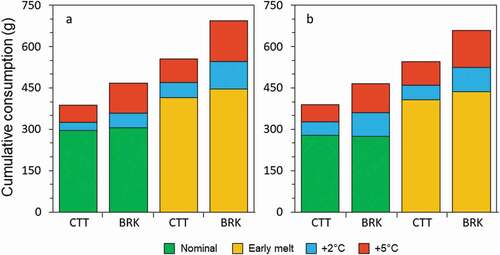Figures & data
Figure 1. Raw Wilderness Area (RWA) of northern Colorado, United States, with location of the lakes in blue (R2 = Rawah #2, R3 = Rawah #3, R4 = Rawah #4) and approximate elevation topography (m.a.s.l.). The locations of the weather station (X), SNOTEL site (triangle), and Michigan River stream gauge (cross) are also shown
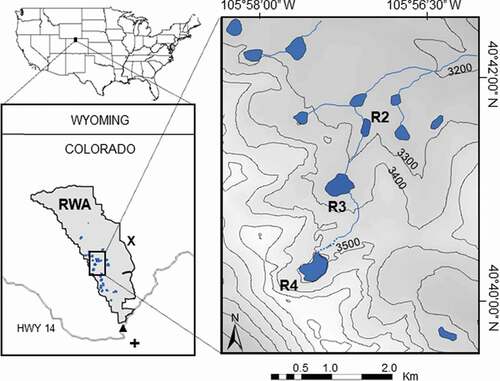
Figure 2. Daily snowpack depth (SWE) and lake surface temperatures and inflow temperature for Rawah #2 and Rawah #3 in 2016, as well as outflow temperature for Rawah #2. Date of ice-out in each lake is indicated. Polynomial functions fit to the inflows are shown as dotted lines
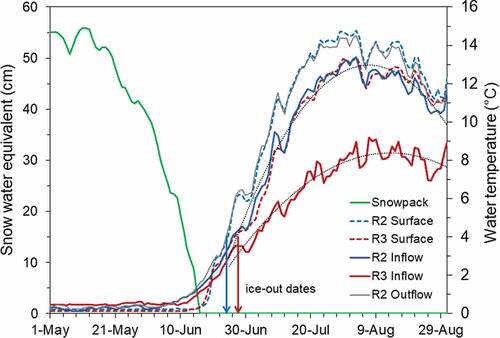
Figure 3. (a) Day of year when snowpack reached zero (snowmelt date; solid line) and yearly maximum snowpack depth (SWE; dashed line). (b) Frequency histogram of snowmelt dates. All snow data are from the Joe Wright SNOTEL station in north central Colorado, United States
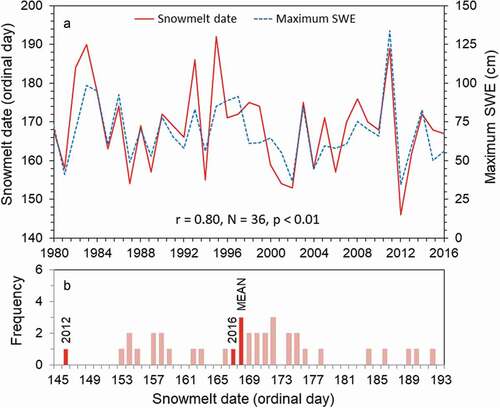
Figure 4. Streamflow from the Michigan River stream gauge for 2012 and 2016 (solid lines). Fitted exponential decay functions are shown for the duration of the open-water period each year (dotted lines)
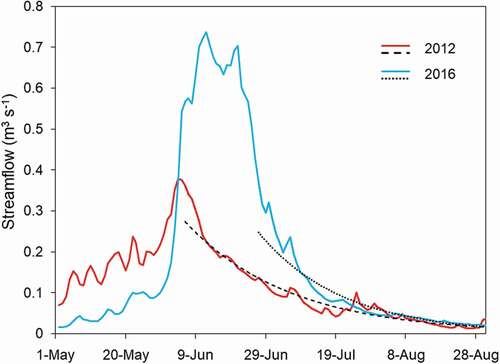
Table 1. Values of coefficients used to simulate lake inflow temperature and volume.
Figure 5. Predicted effects of air temperature and snowmelt scenarios on lake surface temperatures of Rawah #2 (left) and Rawah #3 (right)

Figure 6. Predicted growing degree days in the study lakes under nominal conditions vs. increased air temperature and earlier snowmelt scenarios. Percentages show relative change from nominal conditions for the simulation period. Growing degree days extrapolated after 31 August until water temperature reached 4°C in autumn are also shown
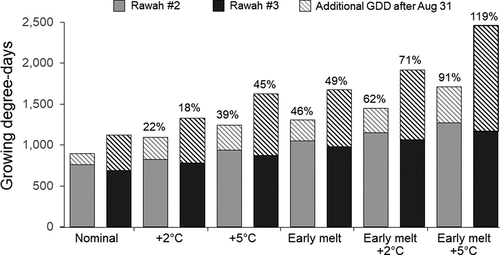
Figure 7. Mean specific respiration rates of cutthroat trout and brook trout during ice-off to August 31 in Rawah #2 (A) and Rawah #3 (B) under six hydroclimate scenarios
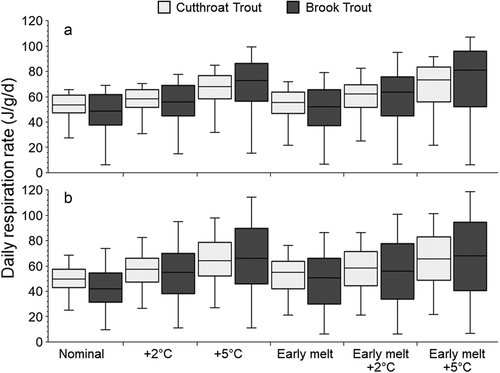
Figure 8. Predicted cumulative consumptive demand of cutthroat trout (CTT) and brook trout (BRK) in (a) Rawah #2 and (b) Rawah #3 during ice-off to 31 August across hydroclimate scenarios: nominal air temperatures and nominal snowmelt (green), nominal air temperatures and early snowmelt (orange), and the additional effect of 2°C (blue) and 5°C (red) warmer air temperatures on each snowmelt scenario
